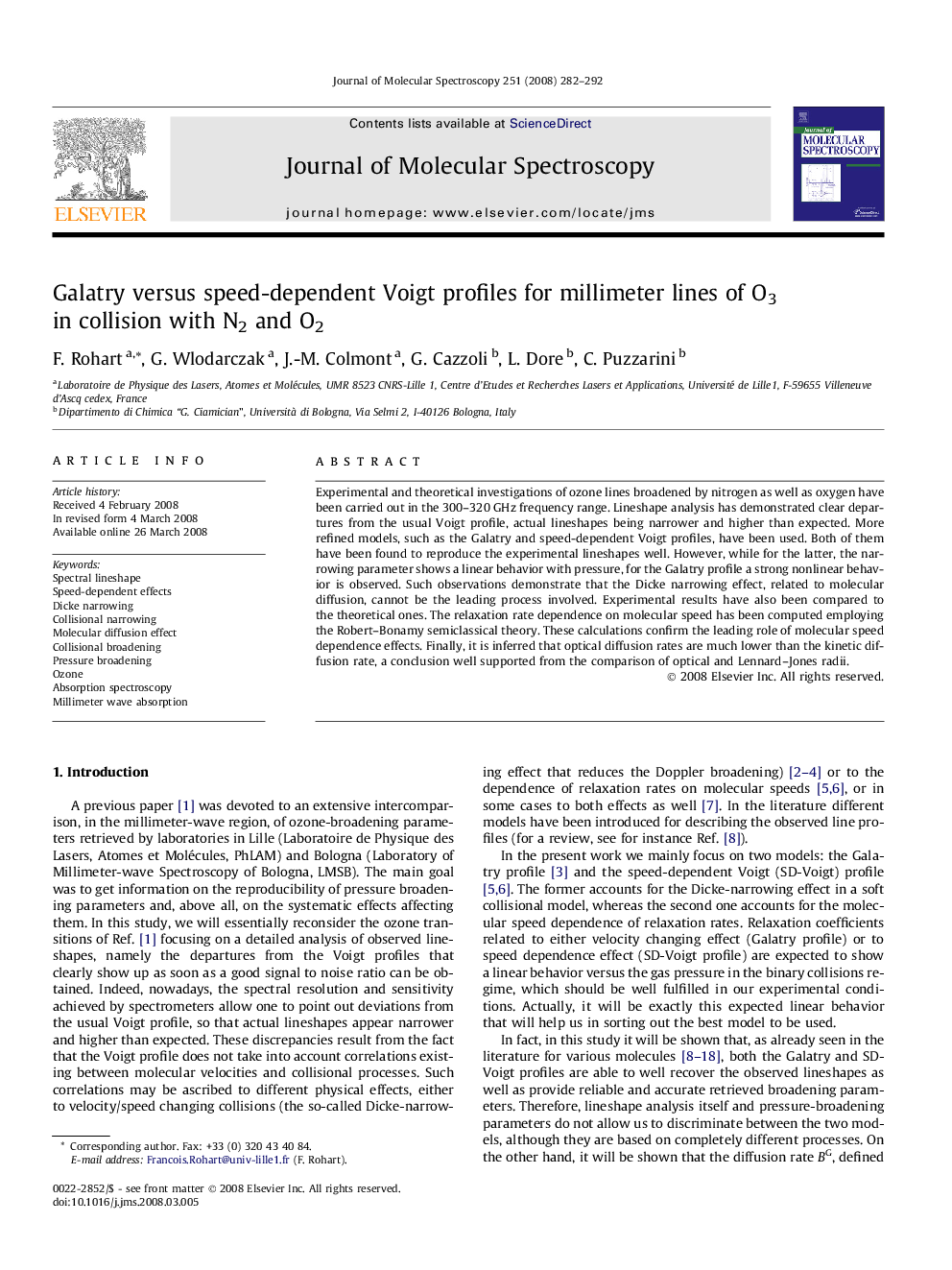| Article ID | Journal | Published Year | Pages | File Type |
|---|---|---|---|---|
| 5415572 | Journal of Molecular Spectroscopy | 2008 | 11 Pages |
Experimental and theoretical investigations of ozone lines broadened by nitrogen as well as oxygen have been carried out in the 300-320Â GHz frequency range. Lineshape analysis has demonstrated clear departures from the usual Voigt profile, actual lineshapes being narrower and higher than expected. More refined models, such as the Galatry and speed-dependent Voigt profiles, have been used. Both of them have been found to reproduce the experimental lineshapes well. However, while for the latter, the narrowing parameter shows a linear behavior with pressure, for the Galatry profile a strong nonlinear behavior is observed. Such observations demonstrate that the Dicke narrowing effect, related to molecular diffusion, cannot be the leading process involved. Experimental results have also been compared to the theoretical ones. The relaxation rate dependence on molecular speed has been computed employing the Robert-Bonamy semiclassical theory. These calculations confirm the leading role of molecular speed dependence effects. Finally, it is inferred that optical diffusion rates are much lower than the kinetic diffusion rate, a conclusion well supported from the comparison of optical and Lennard-Jones radii.
